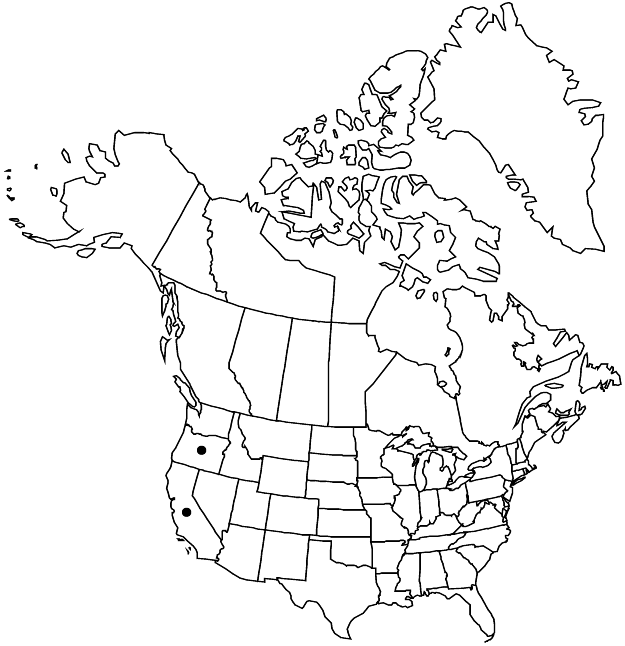Eriogonum ternatum
Fl. N.W. Amer., 570. 1902.
Herbs, spreading, matted, synoecious, 1–2.5 (–3) × 3–13 dm, tomentose. Stems: caudex spreading; aerial flowering-stems erect, slender, solid, not fistulose, arising at nodes of caudex branches and at distal nodes of short, nonflowering aerial branches, 1–2.5 (–3) dm, tomentose. Leaves in loose basal rosettes; petiole 0.5–1 cm, tomentose; blade oblong to obovate, (0.7–) 1–1.5 × (0.4–) 0.8–1.3 cm, usually densely brown-tomentose abaxially, tomentose to thinly tomentose, floccose or glabrate adaxially, margins entire, plane. Inflorescences umbellate, rarely with an additional bracteate branch and 1 peduncle with 1 involucre, 0.8–3 × 1–3.5 cm; branches thinly tomentose; bracts 4–6 (–8) at first node, lanceolate, 0.5–1.5 × 0.2–0.9 cm, scalelike distally, 1–3 × 0.5–1.5 mm. Involucres 1 per node, turbinate, 5–8 × 3–5 mm, tomentose; teeth 5–8, erect, 0.8–2 mm. Flowers 3–5 mm, including 0.3–0.6 mm stipelike base; perianth sulphur yellow, glabrous; tepals monomorphic, spatulate to obovate; stamens exserted, 3–4 mm; filaments pilose proximally, infrequently glabrous. Achenes light-brown, 3.5–5 mm, glabrous except for sparsely pubescent beak.
Phenology: Flowering Jun–Aug.
Habitat: Sandy to gravelly often serpentine slopes and outcrops, manzanita and sagebrush communities, oak and montane conifer woodlands
Elevation: 400-1700(-2200) m
Discussion
Eriogonum ternatum is infrequently encountered in the Coast Ranges of southwestern Oregon (Curry and Josephine counties) and adjacent northwestern California (Del Norte and western Siskiyou counties). A collection from “Dodkin’s Lake” in the Mt. Eddy area of Siskiyou County (Bracelin 455, IND) remains to be confirmed, as this is well to the east of other populations. Some workers have confused this species with E. umbellatum (especially var. humistratum). No doubt the poor representation of this species in herbaria is due at least in part to collectors having assumed that it is some variant of the much more common E. umbellatum.
Selected References
None.
Lower Taxa
"dm" is not declared as a valid unit of measurement for this property."dm" is not declared as a valid unit of measurement for this property."dm" is not declared as a valid unit of measurement for this property.
